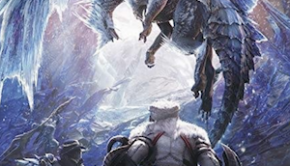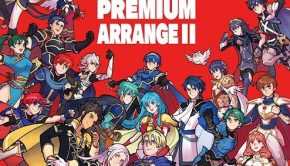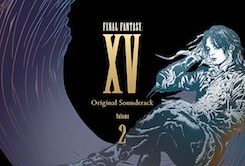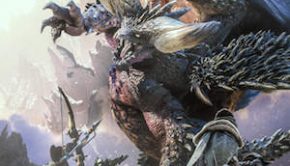Monster Hunter Hunting Music Collection IV
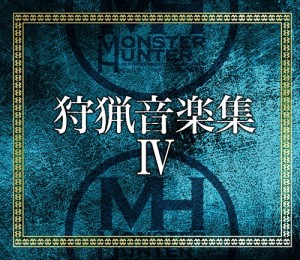 |
Album Title: Monster Hunter Hunting Music Collection IV |
| Record Label: Suleputer |
|
| Catalog No.: CPCA-10373/4 |
|
| Release Date: Jan 14, 2015 |
|
| Purchase: Buy from CDJapan |
Overview
The Monster Hunter franchise has sparked a huge fanbase, as well as something of a cult following in the US. Developed and produced by CAPCOM, the series has spread out over an unusual variety of consoles, originating on the PlayStation 2 and with its latest release on Nintendo 3DS, marking its first game on a handheld console to incorporate a complete online multiplayer system. The music has been an integral part of the series since the first game, and in fact since the first soundtrack, it has been accompanied by regular releases of music collections regularly released between or alongside games. The music collections feature “best of” playlists from specified games, celebrating the various tracks that have brought recognition to the scores of Monster Hunter. The latest game in the series, Monster Hunter 4G, is an updated edition of the fourth game of the main franchise, accompanied by some updated music. The Monster Hunter Hunting Music Collection IV is a two-disc set. The first disc is the original soundtrack of Monster Hunter 4G, and the second disc compiles a list of “best-of” tracks from Monster Hunter 3 and 4.
Body
Disc one is a collection of new and revamped tracks from the original soundtrack to Monster Hunter 4 (which is itself a full two discs in length). Additionally, because of the continuity of the series, a few of the songs are rearranged versions of tracks that appeared in earlier games, such as the second track, “Bustle of Dundorma.” The area theme represents a town that first showed up in the series in Monster Hunter 2, but the new instrumentation features a lovely combination of sitar and acoustic guitar that brings a fluid but relaxed pace to the previously higher-energy piece. Combined with a pentatonic pattern, the sitar very clearly places the culture of 4G in an Eastern setting I enjoyed the constant plucked rhythm and counter-melodies giving the piece constant rhythmic subdivisions, and found that the 4G music was consistently as varied and complex and thoughtful as this one.
While overall, the Monster Hunter franchise tends to lean towards the dramatic, a surprisingly high number of the pieces on the first disc tend to follow in the same vein as “Dundorma” in terms of their more thoughtful and intricate pieces. “Prosperous Business!” has more percussion in it, but maintains the same Eastern vibe as “Dundorma” through instrumentation, rhythm, and the scalar pattern used in the melody. “Colorful Banquet” is another such piece which takes the same instrumentation, adding a beautiful erhu and subtracting some of the percussion, and with a gentle plucked melody creates a gentle, slightly sorrowful piece. The careful combination of instruments ranges from calming to hypnotizing, and I found myself going back several times to listen to the wandering, twisting piece. The following track, “‘Demolisher’ Completed” is far more straightforward in its setup, featuring strings and horns in a calmly pulsing pattern, and “Legacies” follows the same pattern, with a smaller orchestra of instruments.
Of course the album has its fair share of battle music, including the returning “Crimson Horn – Monoblos,” the revamped desert battle theme, which gets its title from one of the monsters that resides in the area. The Monoblos is a creature which shows up at the end of the opening cinematic sequence of Monster Hunter 4G; in fact the first track on the album, “Monster Hunter 4G” is the audio from this opening scene, in-game sounds and all. I chose to bypass this track simply because the other sounds included make it difficult to listen to the music alone, but a large part of it comes from the classic battle theme featured in “Crimson Horn.” The music has desert-inducing harmonic minor scale motif repeated regularly throughout the song, laced with light tribal percussion and dissonant, arrhythmic chords.
Dissonance and arrhythm are a major part of the battle music setup in this game – “Thousand Blade Wyvern” has a semi-syncopated opening percussion sequence, and a descending set of notes that repeat throughout the song. “Conclusion of the Storm” starts with a shrieking dissonance of high strings, and while a sinister melody plays on softer plucked strings amid light percussion, but is frequently drowned out by the more heart-pounding brass and percussion. Unlike a lot of current game music, the battles of this game are not, at this point in the album, meant for you to be something to hum along to as you play, but instead something to get your pulse going as you fight in-game. These are not fun, catchy battle tracks, but harsh, almost nervewracking, pieces. For the purpose of the game, they work; battles are certainly serious affairs in Monster Hunter, although in terms of out-of-game music, I found myself more gravitated towards the more mellow tracks for easy listening.
Not all of the battle tracks follow this pattern, however. “Heavy Wings” was one of my favorite tracks on the whole album, sounding like some cross between a Danny Elfman opening sequence and a Final Fantasy boss theme. If nothing else, the sheer quirkiness of the piece – whether it was in the celli or percussion occasionally mixed with what sounds like extremely subtle vocals – drew my attention at the end of an album that combines so many different styles. “Before the Performance” follows neither the pattern of the mild pieces nor the pattern of the more intense battle pieces, instead reflecting the sounds of an eerie music box with a slightly more nuanced set of plucked strings.
Vocals are also used in a large portion of the album, from the background sounds of “Crimson Corner” to the very forefront of other tracks like “Prelude,” which is an actual song, with an instrumental opening and a lead singer. The song has an Celtic feel, with many portions being sung in constant harmonies, and primarily consists of female vocals; the lead soloist is a soprano with a strong voice and extremely gentle vibrato, which lends itself well to the techniques used in “Prelude,” particularly the constant harmonies and doubled voices. “The Red Flame of Disaster” is another vocal track, this one featuring a full choir in a more traditional game soundtrack setting. One of the most dramatic songs on the album, “Red Flame” opens with a slow and deliberate chorus ultimately ending in chromatic patterns, and is interspersed with a celli pattern echoing that of “Heavy Wings.” The piece sounds almost Baroque at times before quickly backing down and looping.
The second disc of Monster Hunter Hunting Music Collection IV features a “best-of” collection of tracks from the Monster Hunter 3 and 4 original soundtracks. A number of similar Hunting Music Collection albums that feature similar collections from the franchise have been released since the series first began in 2004. As the name suggests, these collections are of specific hunting battle tracks, not just any tracks from the game. There are several side effects to having such a high number of collections over shorter spans of time, perhaps the most obvious of which is that there are smaller pools of music to choose from each time. This of course affects the quality to some degree, but the biggest issue for me was the lack of balance in the album. I would first like to note that most of the songs were quite good. I don’t doubt that the collection accurately represents the best hunting tracks from the two soundtracks. The issue is that the majority of tracks featured on this disc are representative of the battle themes described from disc one. While something like “Heavy Wings” does certainly stand out as an engaging theme on the first disc, a whole disc of similar pieces would be overwhelming, and that’s unfortunately what happens with disc two of the music collection.
Again, however, these pieces are engaging on an individual level. “Tremble of the Sea and Land” is a heroically triumphant theme, played on an array of horns from trombones to trumpets amid strings and frantically beating acoustic percussion. “Earth Sand and Fiery Winds” brings the Eastern influences back with sounds of sifting sand interspersed throughout the piece. Almost a minute into the song, a slow rising chordal sequence briefly surfaces in the brass section before quickly diminishing and giving way to more acoustic sounds, from tribal strings to light wooden percussion. The arrhythmic patterns are back, reminding the listener of the urgency in the moment, and pushing the instruments along.
“Sound of the Great Mountain” has my favorite rhythm of the battle tracks, with something akin to a dotted note pattern with awkward pauses scattered at the end of measures and phrases to keep the rhythm distorted. It’s pleasantly jarring to listen to – while the movement of the piece is very obvious, any pattern or direction is difficult to discern (although both are present). I enjoyed the frenetic nature of the piece; “sound” is indeed a much better word than “song” for this track. “Moonquake” was one of the most distinct pieces, opening with an unusual low vocal introduction, and proceeding to feature the vocals more prominently than any other instrument. Because so much of the album consists of the much louder and bolder brass sequences, the vocals contrast the rest of the music nicely.
“Blazing Ocean” is a fun piece, with more vocals – this time in the form of a big sweeping choir; starting off with an uncertain series of chords and instrumental breaks, the vocals rise up alongside the instruments. The piece is dramatic like its companions, but this one stood out simply because it seems to revel in its unique – for this score – use of cinematic vocals. Some of the pieces are almost exhilarating – “Fangs on the Surface of the Ice,” after a conglomerate introduction packed with varying instruments and lines, breaks into a mighty flurry of strings that, after so many dark and daunting tracks, is a breath of fresh air. I found myself returning to that piece several times to just to hear those strings again.
Summary
On the whole, this two-disc set is a high-quality set of music. The first proves to be a wonderful addition to the already-strong soundtrack of Monster Hunter 4, while the second collects top-quality monster fighting music from games three and four. The second disc is an overwhelming listen, consisting of a large slew of monster fighting music, and the album ends up losing balance as a result. It is harder to find battle pieces that really stand out in a collection of battle music, and that was the trouble I found myself having with disc two. However, individually, the tracks are packed with good material, and in particular the musical extension to the Monster Hunter 4 Original Soundtrack is a treat to listen to.
Do you agree with the review and score? Let us know in the comments below!
3.5
Posted on March 18, 2015 by Emily McMillan. Last modified on March 19, 2015.

